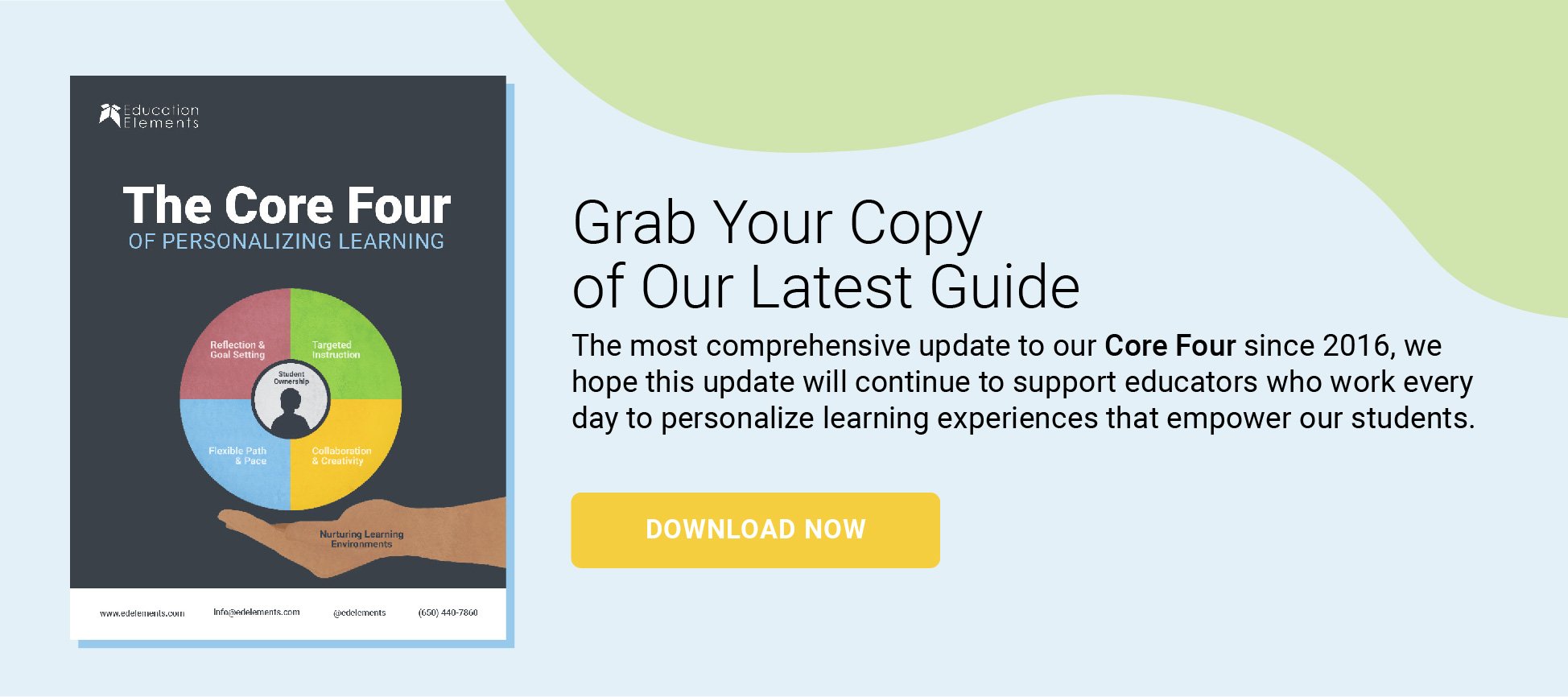Adaptations for Flexible Learning
Virtual Learning | District Leadership
Fenestration, in architecture, is the way windows, doors, and openings are placed and arranged on a building. In medicine, fenestration refers to a new opening in the body made through surgery. There is another meaning of the word and it is used to describe openings in the leaves of plants. Where I live in South Florida, there are a number of plants with leaf fenestrations, perhaps the most common of which is the monstera deliciosa.
Some of you might have it next to you, as it has become a very popular houseplant. Here in the subtropics, it is planted in many people’s landscapes including my own. Some people believe that the leaves have formed holes to help the plant survive the strong winds of tropical storms and hurricanes, a common occurrence in this part of the world. Others think the leaf fenestrations exist to let sunlight filter through to “understory” leaves so that they can grow and thrive (in its natural habitat, the jungle, monstera grows like a vine up very tall trees). Each of these is a theory to explain the adaptations, but no one knows for sure.
Right now, in our reality of unknowns, students, teachers, and school communities across the country are adapting too–so that the sunlight of new ideas and concepts reach every learner and the turbulent wind of changing pandemic conditions, stress, and anxiety do not prevent learners from growing and thriving.
Teachers are leading the way in adapting what learning, supporting students, and creating safe spaces look like with their students. They are drawing on best practices, learning through trial and error, and mixing in some intuition and empathy to best support their students.
To better understand what this looks like, I interviewed ten teachers across the country about how they are adapting teaching and learning. From their experience and wisdom, we can tease out considerations for school and district leaders as to how they might better support teaching and learning across in-person, hybrid, and distance learning models. Below are three adaptations, based on their practice, experience, and reflection.
Adaptation 1 - Live a day in the life of a student and a teacher
A teacher in central Georgia described his school’s community and the living situation for some students: “We have several vacant and rundown homes; several homes that are rundown and should be vacant but aren’t. Running water is not considered a necessity. There are several students who do not have a front door or roof on their homes.”
Another teacher in a large urban district in the northeast shared that the school’s ventilation system is mediocre and windows are open just to be extra safe and better circulate the air. When it is 50 degrees outside, this makes for a cold classroom, which makes it hard to learn and hard to teach over the course of a six or seven-hour day. On top of that, the teacher shared how the district-provided meals of largely processed foods are doing little to help students focus and take care of themselves.
Some educators naturally make an effort to empathize with what their students experience, physically and emotionally. Others are aware but might feel pressure to keep moving through the curriculum. Students cannot be successful unless learning is designed with them and sensitive to what they are experiencing and feeling on the day-to-day.
Leaders, you have heard this before, but take a day or half a day to shadow a student and a teacher. Do not assume you know what it is like for students–live it and experience it with them. Do what they do. Eat what they eat. After you shadow, compare the experience to the expectations set by your school or district. Where are there gaps in your expectations? What is unclear? What does not work? Let these insights and reflections guide how you adapt expectations, systems, and support.
Do not assume you know what it is like for students – live it and experience it with them. Do what they do. Eat what they eat. Where are there gaps in your expectations? What is unclear? What does not work?
Adaptation 2 - Move from engagement to empowerment
A high school English teacher from rural Arkansas shared how before the pandemic, he had been working to empower students to have more agency over their learning through a flipped classroom model. He shared that when the pandemic hit, the expectations and structures needed for students to drive their own learning through video and independent lessons were already in place and made the transition less jarring.
He also shared: “All these teachers who come into their classrooms are thinking, ‘My kids can’t do it,’ and I feel sorry for them.” This teacher raised his expectations and expects students to make decisions to own their learning through a flipped model–and it is working.
When students, teachers, and families are moving between scenarios (i.e., in-person and distance learning) either as individuals or as a school community, one thing that must be consistently available is the curriculum. No longer can teachers be the sole gatekeepers to the learning roadmap and the decision making needed to successfully navigate it. We must empower students to own the curriculum with their teachers.
Speaking to the idea of student ownership and empowerment, an instructional coach from rural Minnesota talked about an article she recently read about Microsoft and how their employees may not ever return to the office and “normal office life”. Many technology companies and companies outside of tech alike have made decisions to have their employees work from home through the early summer of 2021. She pointed out that this is the type of workplace and workforce that we are preparing our students to join–one that values self-direction, navigating complexity, making decisions, and solving problems. She closed out the reflection by saying, “We can no longer play the game of school,” referring to students obediently completing assignments and simply doing what they are told.
Her school in Minnesota and the teachers she supports are using playlists, videos of teachers’ lessons, mastery grids, and digital bins to open up the curriculum and make learning materials and pathways more accessible for students (and their families). This approach communicates to students that their teachers expect them to lean into learning, be active participants, and make decisions for what, how, and why they learn.
That said, students may struggle to take control of their learning if they are unsure what it looks like to take control of their day. A few teachers shared how for the first month of school (and even now) they are reminding students learning from home to get dressed, to create or check in on their schedule, to eat breakfast, and also to spend time off the screen.
Leaders, consider holding retrospective conversations with teams of teachers and groups of students. Push to explore and understand where and how students have voice and agency over their learning and where they do not. Facilitate the sharing of best practices across students and teachers that help learners become more self-directed and empowered.
A few teachers shared how...they are reminding students learning from home to get dressed, to create or check in on their schedule, to eat breakfast, and also to spend time off the screen.
Adaptation 3 - Don’t fight technology, let it work for you
“In a lot of ways teachers are fighting multi-billion dollar tech companies, and we are losing.”
A 6th-grade teacher from the Bay Area shared this reflection with me. He talked about how difficult it is to get students to engage with learning when they could easily watch a Fortnite video or play an online game with their friends.
On the other side of the country, in a suburban district in the northeast, a high school history teacher shared how students are using group text messages during synchronous Zoom calls to talk with one another. She talked about how instead of fighting students’ normal behaviors and tendencies, educators can do more to teach students how to use their phones and other technology responsibly. She said, “Schools need to stop being the barrier for phones, group texts, and other technology–instead, use it!“
Think about your last staff meeting or leadership team meeting, whether virtual or in person. Assuming you were on your computer, did you use your phone at all to answer a text or check an alert from one of your apps? Did you privately message a colleague through Zoom to comment on the meeting you were in? Did you open another tab in your browser to check your email or browse the internet? Be honest.
In our modern society and our modern workplace, including schools and districts, technology use is the norm–a phone and a computer, multiple applications, sometimes a tablet too. Sure, you might have answered a friend or family member’s text message during a staff meeting, but when it was time to focus and pay attention, you probably did. Do you think students can do the same? They can certainly practice and learn.
Phones are one piece of technology that can be better integrated into learning (for example, challenge students to use group texts to brainstorm creative solutions to problems, to debate new ideas and questions, to collect data to inform a theory or hypothesis). But the larger opportunity is upskilling the teacher workforce around technology use. Define competencies for technology use. Be clear on the portfolio of applications and hardware teachers must know and be able to use. Gauge teachers’ comfort and proficiency and provide differentiated support. In order for districts to support a range of flexible learning models, from in-person to hybrid, to distance, we must eliminate the saying, “I’m just not good with technology.”
Overwhelmingly, teachers expressed a desire for leaders to be honest that no one has been in this situation before. They’re also seeking acknowledgment that teachers are closest to the instruction and therefore should be trusted to design learning experiences and also to inform school and district-wide policies.
So as a leader, how are you taking the time to create space for teachers to reflect and share? What are the theories that drive your school’s or district’s adaptations? Hopefully, these stories and insights from teachers around the country provide a jumping-off point to guide how you will continue to adapt your leadership, support, and learning in your community.
If there is one thing that this pandemic has taught us, it is that we must be flexible, and we must adapt so students can learn, grow, and thrive. Students and teachers have been incredibly resilient and are counting on you to do the same.
Join us for our upcoming webinar, Flexible Learning Models for a Resilient District, where we'll review and define a range of learning models, share the benefits and considerations of each and propose ideas for how district leaders might maintain a portfolio of models for a more resilient district.
More Virtual Learning reading
Blog: Tips For Setting Up An At-Home Learning Environment For Young Students
Blog: What Do Students Need Right Now?
Blog: 7 Strategies to Develop Student Executive Functioning Skills for Remote Learning
Blog: Distance Learning Requires a Student-Centered Approach
Blog: Addressing Schooling Loss in Schools With These Four Strategies
Blog: Shifts in Professional Learning: more microlearning and virtual courses
About Justin de Leon
Justin de Leon is a Partner and joined Education Elements in 2012. He began his career in education teaching English at Brownsville Middle School in Miami-Dade. In his first year, he shifted from a traditional model to a blended model as a way to personalize and saw management issues disappear and achievement increase. During several school years, Justin worked with Teach for America to provide mentoring, coaching and professional development to ELA corps members. After moving to the west coast, he gained experience in the charter world while teaching ELA at KIPP Heartwood Academy in San Jose, CA.




